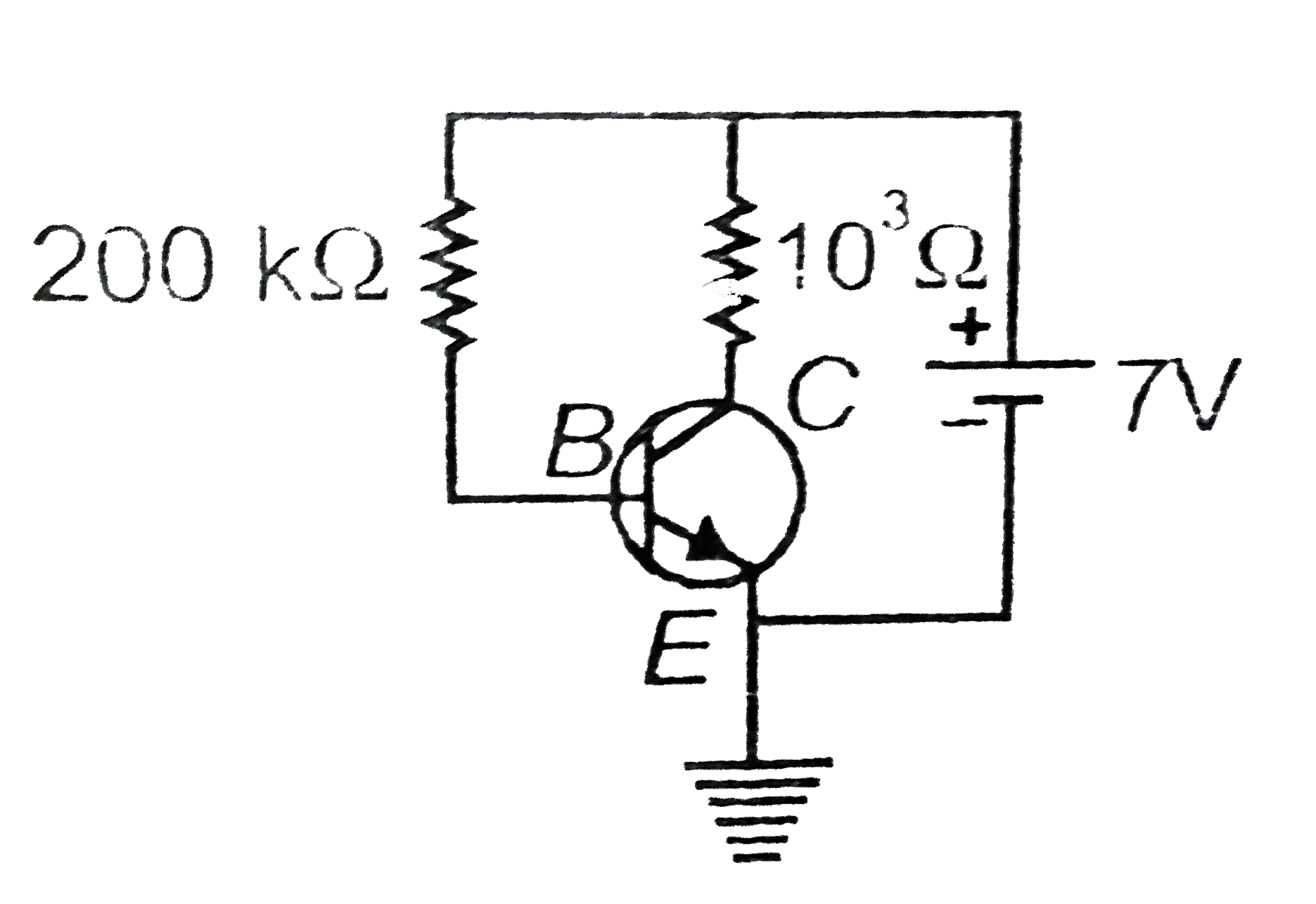An incomplete sentence about transistors is given below :The emitter-…..junction is_and the collector -….junction is _.The appropriate words for the dotted empty positions are, respectively
collector'and 'base'
base'and 'emitter'
collector'and 'emitter'
base' and 'base'
The correct Answer is:D
To fill in the blanks in the sentence about transistors, we need to understand the functioning of a transistor, particularly in the context of how it operates as an amplifier.
1. Understanding the Transistor Structure: A transistor typically has three regions: the emitter, the base, and the collector. The junctions formed between these regions are crucial for the operation of the transistor.
2. Identifying the Emitter-Base Junction: For a transistor to function properly, the emitter-base junction must be in a specific biasing condition. In the case of an NPN transistor (for example), the emitter is usually made of n-type material, and the base is made of p-type material.
3. Biasing Conditions:
- The emitter-base junction needs to be forward-biased for the transistor to allow current to flow from the emitter to the base. This means that the emitter is at a higher potential than the base.
- The collector-base junction, on the other hand, must be reverse-biased. This means that the collector is at a higher potential than the base, preventing current from flowing from the collector to the base.
4. Filling in the Blanks:
- The first blank (emitter-____ junction) should be filled with "base" because we are referring to the emitter-base junction.
- The second blank (collector-____ junction) should also be filled with "base" because we are referring to the collector-base junction.
5. Final Sentence: The completed sentence reads: "The emitter-base junction is forward-biased and the collector-base junction is reverse-biased."
Answer:
The appropriate words for the dotted empty positions are, respectively: base and base.
- The emitter-base junction needs to be forward-biased for the transistor to allow current to flow from the emitter to the base. This means that the emitter is at a higher potential than the base.
- The collector-base junction, on the other hand, must be reverse-biased. This means that the collector is at a higher potential than the base, preventing current from flowing from the collector to the base.
- The first blank (emitter-____ junction) should be filled with "base" because we are referring to the emitter-base junction.
- The second blank (collector-____ junction) should also be filled with "base" because we are referring to the collector-base junction.
The appropriate words for the dotted empty positions are, respectively: base and base.
Topper's Solved these Questions
- SEMICONDUCTOR AND SEMICONDUCTOR DEVICESBOOK - HC VERMA ENGLISHCHAPTER - SEMICONDUCTOR AND SEMICONDUCTOR DEVICESEXERCISE - objective II
8 Videos
- SEMICONDUCTOR AND SEMICONDUCTOR DEVICESBOOK - HC VERMA ENGLISHCHAPTER - SEMICONDUCTOR AND SEMICONDUCTOR DEVICESEXERCISE - exercises
35 Videos
- SEMICONDUCTOR AND SEMICONDUCTOR DEVICESBOOK - HC VERMA ENGLISHCHAPTER - SEMICONDUCTOR AND SEMICONDUCTOR DEVICESEXERCISE - Worked out examples
11 Videos
- PHOTOMETRYBOOK - HC VERMA ENGLISHCHAPTER - PHOTOMETRYEXERCISE - All Questions
38 Videos
- SPEED OF LIGHTBOOK - HC VERMA ENGLISHCHAPTER - SPEED OF LIGHTEXERCISE - Question for short Answer
5 Videos
Similar Questions
Consider an n-p-n transistor with its base - emitter junction forward biased and collector base junction reverse biased . Which of the following statements are true?
View SolutionIn a normal operation of a transistor,
(i) base-emitter junction is forward-biased
(ii) base-collector junction is forward-biased
(iii) base-emitter junction is reverse-baised
(iv) base-collector junction is reverse-biased
View SolutionConsider an n-p-n transistor with its base - emitter junction forward biased and collector base junction reverse biased . Which of the following statements are true? a) electrons crossover from emitter to collector. b) Holes move from base to collector c) Electrons move from emitter to base d) Electrons from emitter move out of base without going to the collector
View SolutionThe emitter-base junction of a transistor is .........biased while the collector-base junction is.......biased
View SolutionA transistor is used in common emitter mode as an amplifier. Then
(1) the base-emitter junction is forward biased
(2) the base emitter junction is reverse biased
(3) the input signal is connected in series with the voltage applied to the base-emitter junction.
(4) the input signal is connected in series with the voltage applied to the base collector junction.
View SolutionDescribe briefly with the help of a circuit diagram, how the flow of current carriers in a p-n-p transistor is regulated with emitter-base junction forward biased and base-collector junction reverse biased.
View SolutionIn the given figure, a transistor is connected in common emitter configuration . If VBE=1V and current gain β=100, then the voltage across collector- emitter terminals VCE is
[VBE-voltage across base-emitter junction ]

View SolutionYou are Nitin/Nita from XYZ School. You wish to start applying to various colleges for admission after your ISC examination. In about 300 words, draft your personal profile using the guidelines given below :
Your name, years spent in the school you are passing out from-academic interests and performance-cultural activities you participated in-sports-positions of leadership held during your stay in the school- your future plans and goals-two characteristics that you consider to be your strengths--two characteristics that set you apart from the others.
View Solution
